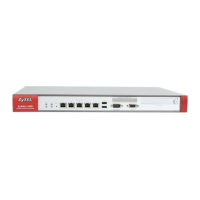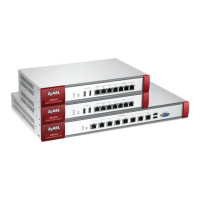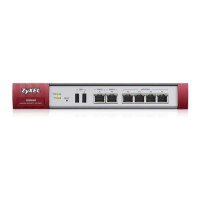Chapter 10 Interfaces
ZyWALL/USG Series User’s Guide
350
Figure 247 Configuration > Network > Interface > Trunk
The following table describes the items in this screen.
Table 124 Configuration > Network > Interface > Trunk
LABEL DESCRIPTION
Show Advanced
Settings / Hide
Advanced Settings
Click this button to display a greater or lesser number of configuration fields.
Configuration Configure what to do with existing passive mode interface connections when an
interface set to active mode in the same trunk comes back up.
Disconnect
Connections
Before Falling Back
Select this to terminate existing connections on an interface which is set to passive
mode when any interface set to active mode in the same trunk comes back up.
Enable Default SNAT Select this to have the ZyWALL/USG use the IP address of the outgoing interface as
the source IP address of the packets it sends out through its WAN trunks. The
ZyWALL/USG automatically adds SNAT settings for traffic it routes from internal
interfaces to external interfaces.
Default Trunk
Selection
Select whether the ZyWALL/USG is to use the default system WAN trunk or one of
the user configured WAN trunks as the default trunk for routing traffic from internal
interfaces to external interfaces.
User Configuration /
System Default
The ZyWALL/USG automatically adds all external interfaces into the pre-configured
system default SYSTEM_DEFAULT_WAN_TRUNK. You cannot delete it. You can
create your own User Configuration trunks and customize the algorithm, member
interfaces and the active/passive mode.
Add Click this to create a new user-configured trunk.
Edit Double-click an entry or select it and click Edit to open a screen where you can
modify the entry’s settings.
Remove To remove a user-configured trunk, select it and click Remove. The ZyWALL/USG
confirms you want to remove it before doing so.
Object References Select an entry and click Object References to open a screen that shows which
settings use the entry. See Section 10.3.4 on page 286 for an example.

